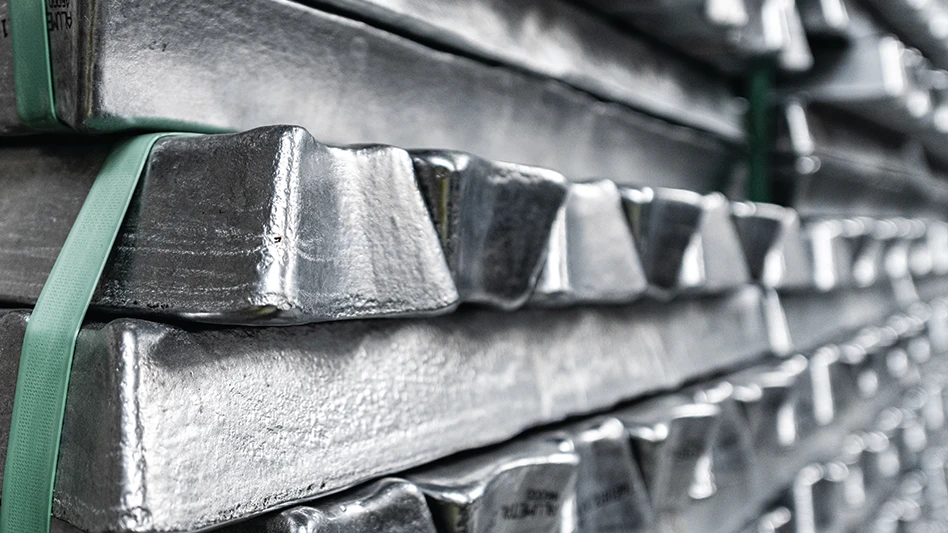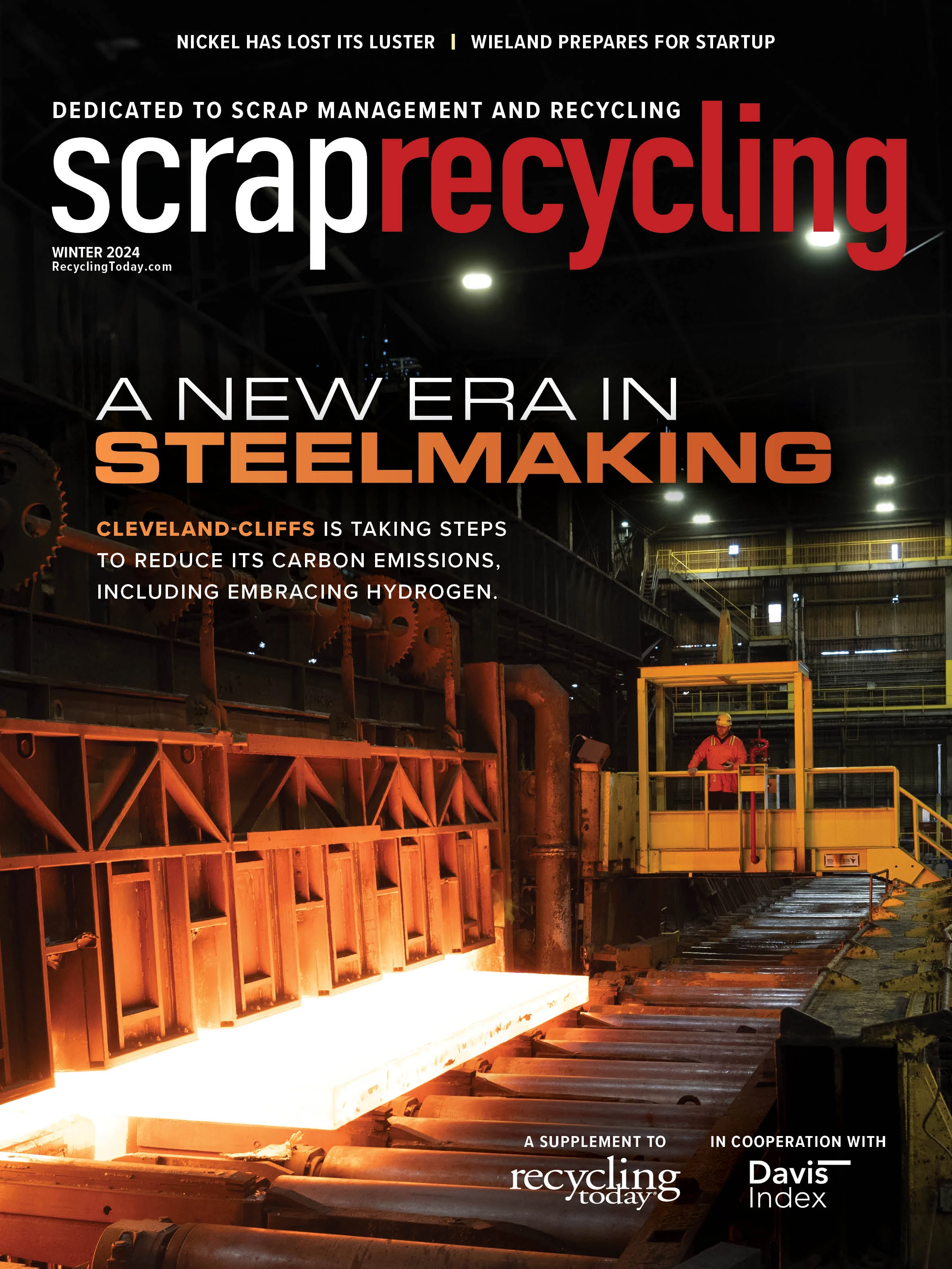
© WATCH_MEDIA_HOUSE | stock.adobe.com
Aluminum scrap markets in the U.S. and Asia have witnessed persistent weakness over the past few months, with any real upside likely only coming toward the end of the first quarter.
While economic issues in China are at the center of demand-side headwinds, importers in India and neighboring countries also are facing their own set of challenges in the aluminum scrap market. In the short term, consumption of Asia’s barometer secondary aluminum grade, ADC12, will be driven by industrial and automotive production, along with manufacturing and infrastructure projects in the region.
On the flip side, strong economic growth has supported demand in countries such as India, Japan, Hong Kong and Malaysia. However, the largest consumer of secondary aluminum has been China. Many exporters in these countries have lost up to 40 percent of their usual business after Chinese buyers virtually exited the market.
Uncertainty in India
India, the largest consumer of aluminum scrap from the U.S. today, has its own challenges. One recent issue is the 2.5 percent import duty. The Aluminum Association of India, based in Bangalore, is a group of primary aluminum manufacturers that has suggested the government raise this duty to 10 percent to prevent dumping of material that previously would have found homes in China.
However, the secondary aluminum industry remains largely dependent on imported aluminum scrap to feed its furnaces given the unorganized nature of India’s recycling system. The Material Recycling Association of India, Mumbai, has advocated for the abolition of the import duty on aluminum scrap as it would bring the primary and secondary aluminum industries to par.
Another issue is that companies within the secondary aluminum industry are classified as micro, small and medium enterprise firms in India, which lack representation. Hence, most policies regarding aluminum are made with primary aluminum raw materials such as bauxite, alumina and coal in mind, while aluminum scrap has little support.
Lastly, a major headwind importers in India and across Asia more widely continue to face is the strengthening of the U.S. dollar against their currencies. Foreign exchange losses are something importers work to contain.

Tightening supply in the U.S.
The U.S. secondary aluminum market is in a similar circumstance. Exporters are hoping the new year brings new business from Asia and Europe, but chances seem slim. Tightening supply in the domestic market means export yards have to fight harder to get material to ship overseas. Notably, the Midwest Transaction Price is at an annual low, making it relatively affordable for buyers to purchase mill-grade recycled material, like 6063 and 6061 extrusions, along with A356 wheels and aluminum-copper radiators.
This advantage might not last past January, once demand for P1020 picks up and drives the Midwest Premium up from its current floor. However, as supply continues to be squeezed into the winter months, aluminum scrap prices will rise and it will become harder to procure large loads of any grade. Hence, many domestic smelters have locked in material through their 2024 annual contracts.
Export demand for U.S. aluminum scrap has declined steadily in recent months in terms of volume, while pricing has been fairly level.
The Davis Index for taint/tabor settled at 73.3 cents per pound, fas (free alongside ship) U.S. port, Nov. 22, 2023, up 6 cents per pound from 72.7 cents per pound, fas, July 20. In the same period under review, the index for taint/tabor was at $1,740 per metric ton, cost, insurance and freight (cif) Asia port, down $21 per metric ton from $1,761 per metric ton, cif.
The slowdown in trading largely is because many consumers in Asia are in destocking mode, having bought up a great deal of material in the second and third quarters of 2023. Many Asian smelters report growing inventories of finished ingots, leading some to slow production. After China, the big buyer of ADC12 is Japan, where buyers are procuring only as much material as required for immediate consumption. As a result, market sentiment gradually turned bearish after July of last year, and shipments trended down.
Defying the trends
The shredded aluminum grade zorba 99/3 consistently has defied market trends. Demand for zorba, a principal grade used in melts to produce ADC12, had been robust throughout the second half of 2023. There were short periods in September where only the zorba grades were being traded healthily, while others such as taint/tabor and tense were rather slow.
Zorba supply tightened toward the end of the year, pushing prices higher. The Davis Index for zorba 99/3 was 79.2 cents per pound, fas U.S. port, Nov. 22, 2023, up 6.8 cents per pound from 72.4 cents per pound, fas, July 20. In the same period, the index for zorba 99/3 rose $60 per metric ton to $1,795, cif China port, from $1,735 per metric ton, cif.
The U.S. domestic market has seen an inverse trajectory recently. Trading had been very slow since June 2023 as many smelters filled up on material in the first half of the year. Moreover, the United Autoworkers (UAW) strike at the Big Three automakers in Detroit forced smelters to use caution, which made for a quiet secondary aluminum scrap market from July to October. The strike ended after 45 days, giving an unexpected boost to secondary ingot trading. Prices for aluminum scrap and its end product, ingots, had been moving up steadily throughout this past November.
Aluminum scrap supply has seen a seasonal squeeze as colder temperatures hamper collection. The resulting higher prices are pushing up ingot prices as well. The Davis Index for die casting alloy 356.1 was $1.60 per pound, delivered. U.S. consumer, Nov. 22, 2023, down 10.2 cents from $1.702 per pound, delivered, July 21. Pricing has recovered by 9.2 cents per pound, however, since reaching a low of $1.508 per pound Oct. 27, 2023, around the peak of the UAW strike.
Apart from China’s involvement in the aluminum scrap market, it also is the sole supplier of silicon, an important alloying element for secondary ingots. A recent hike in silicon prices has pressured margins for ingot sellers in the U.S. and Asia.

A promising outloook
The medium-to-long-term outlook for secondary aluminum is promising. An important factor is the lightweighting of cars for better fuel efficiency in combustion engine vehicles and higher range in electric vehicles, translating to bolstered demand for 6063 and 6061 aluminum as well as ADC12.
Research by Troy, Michigan-based global consultancy Ducker Carlisle shows aluminum consumption is expected to increase by 15.6 percent to 237 kilograms, or 522.5 pounds, per vehicle by 2026 in European cars compared with 207 kilograms, or 456 pounds per vehicle, in 2022. Market participants in Asia are forecasting similar growth.
The clean energy transition also supports aluminum demand. Aluminum is one of the principal metals used for solar panel construction. A recent study by CRU International for the International Aluminum Institute, London, expects solar demand to reach 5.2 million metric tons by 2030. Globally, aluminum demand is forecast to rise 40 percent to 119.5 million metric tons by 2030 compared with 86.2 million metric tons in 2020.

Explore the Winter 2024 Scrap Recycling Issue
Check out more from this issue and find your next story to read.
Latest from Recycling Today
- BMW Group, Encory launch 'direct recycling’ of batteries
- Loom Carbon, RTI International partner to scale textile recycling technology
- Goodwill Industries of West Michigan, American Glass Mosaics partner to divert glass from landfill
- CARI forms federal advocacy partnership
- Monthly packaging papers shipments down in November
- STEEL Act aims to enhance trade enforcement to prevent dumping of steel in the US
- San Francisco schools introduce compostable lunch trays
- Aduro graduates from Shell GameChanger program





